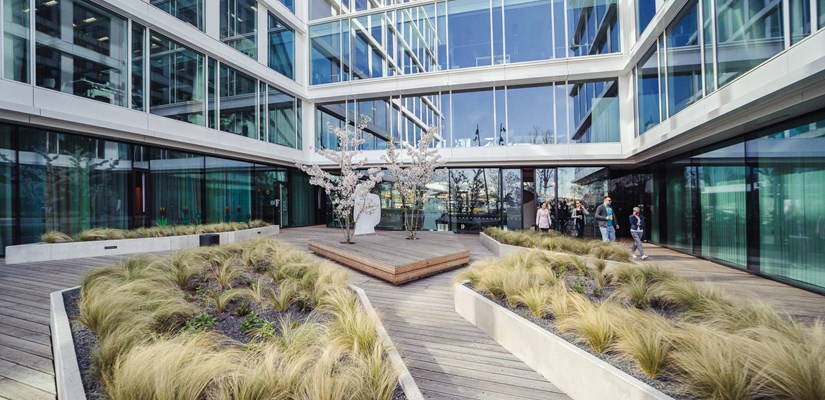
Together, building and construction are responsible for 39% of all carbon emissions in the world, with operational emissions (from energy used to heat, cool and light buildings) accounting for 28%. The remaining 11% come from embodied carbon emissions, or ‘upfront’ carbon that is associated with materials and construction processes throughout the whole building lifecycle.
“As a city builder we are fully aware that what we do is there to stay for a long time. We are accountable to future generations and sustainability is just how we want to do business. Our ultimate goal is to build only climate-neutral buildings. In order to achieve this ambition, we need to look constantly for climate-smart solutions and – as we will not do it ourselves – involve the supply chain in reducing the climate impact. I believe having the right partners and a constant search for innovations are crucial to building a more sustainable future,” said Katarzyna Zawodna-Bijoch, CEO and President at Skanska commercial development business in Central Eastern Europe.
The office building which is under design and aims for climate neutrality is going to be located on 13 000 m2 land on Radlická Street in Prague 5 in close proximity to a subway station. The leasable space is estimated to be 30,000 m2.
“To achieve our goal of a climate-neutral building, besides other highly efficient and sustainable solutions, we are going to replace structural elements from concrete to timber. Wood has amazing qualities. One of the best, especially in the current context of accelerating climate change, is the fact that the material has a very low carbon footprint. Wood not only stores CO2, it can also be re-used when the lifecycle of the building is over. The use of wood is a part of an ongoing natural lifecycle,” said Alexandra Tomášková, Executive Vice President Operations Hungary & Czech Republic at Skanska Commercial Development Europe.
“In order to survive, humanity has to start using less. Architects therefore have to come up with concepts aligned with sustainable development trends. Wood is the answer to many of our criteria. It is energy-efficient, allows prefabrication, recycling and it is light but load-bearing. In addition to all of the mentioned benefits, it also creates a very pleasant environment and has a positive effect on all of our senses. The building is going to be great to work in,” said Jakub Cigler from Jakub Cigler Architekti, the studio responsible for the project. The team specializes in sustainable buildings. The previous project they shared with Skanska, Visionary – located in Holešovice district in Prague – became one of the greenest office buildings in the world.
Why is wood such a sustainable material?
Trees take carbon dioxide from the air, and while converting it into wood they release oxygen back into the atmosphere . But the older the tree gets, the slower it grows, using less and less CO2. Eventually it starts to decay, releasing CO2 back into the air . If we use the wood before the end of its lifecycle as a material, CO2 stays preserved in the timber for decades.
“This is when we can step in and involve the whole supply chain to join our mission of building for a better society by reducing the greenhouse gas emissions. In this way we save CO2 both directly and indirectly, because the easy prefabrication and lightness of timber allows more components to be loaded on one truck. At the same time all the wood used will come from controlled and sustainable sources,” continues Tomášková.
Using wood instead of steel or concrete means less fossil fuel consumption and, as a result, less greenhouse gas emissions. A wooden construction is easily prefabricated, reducing the amount of work that needs to be done right on the site. In addition, core construction from timber is faster to build than concrete, being also easily recyclable.
“Aside from the amazing eco-friendly qualities of timber, the material is also beneficial to the health and well-being of people working in the building which is one of our main priorities when developing new projects,” added Alexandra Tomášková.
Leader in green development
As a part of its journey to climate neutrality, the developer strives to create buildings that have low climate impacts and reduced long-term operating costs. Apart from carbon, the ambition applies to three more categories: energy, materials and water. Skanska’s projects aspire to and regularly achieve top certifications of sustainability.
Skanska in Sweden is developing Hyllie Terrass, one of the projects that is part of the Sweden Green Building Council's pilot study on ZeroCO2 certified buildings. The target of ZeroCO2 is to instigate building with a net-zero climate impact and to continue to develop the industry's sustainability work.
Sustainability is also at the heart of the BoKlok concept, which is why the homes are made of timber – the most climate-smart building material.